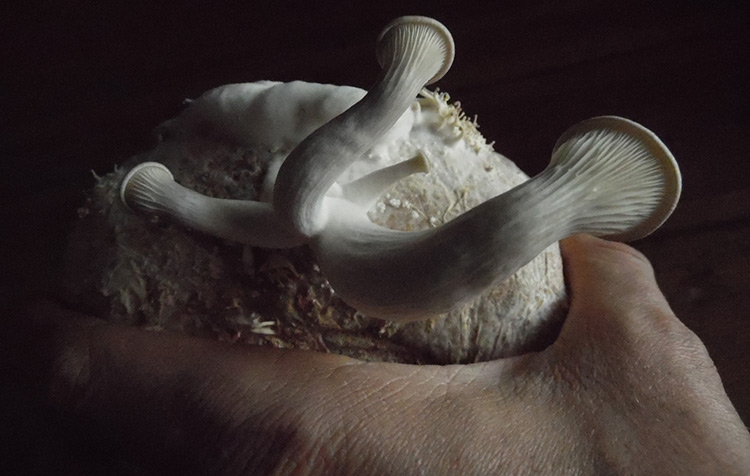You want to grow your own herb mushrooms? Then you've come to the right place! Herb mushrooms are very appreciated in mushroom dishes. They have a spicy, nutty flavor and have a firm consistency even after heating. Therefore, they can also be used very well as vegan meat substitute be used. The popular edible mushroom can be eaten raw in a salad, for example - but tastes especially good when marinated, fried, pickled or steamed.
In this article I want to show you how to grow your own herb mushrooms at home in a cucumber jar.
Why grow herb mushrooms yourself?
Herbaceous mushrooms do not occur in nature in Germany. Unfortunately, they are not always found on supermarket shelves either, as their Breeding is more laborious and the mushroom, accordingly, more expensive is.
But the mushroom cultivation makes incredibly have fun, as they grow much faster compared to garden plants, and yet so completely different. The fascination comes when you look at them - within a few hours they can grow a few centimeters. And at the end of the breeding is a noble mushroom dish!
Preparation of own mushroom farm in the kitchen
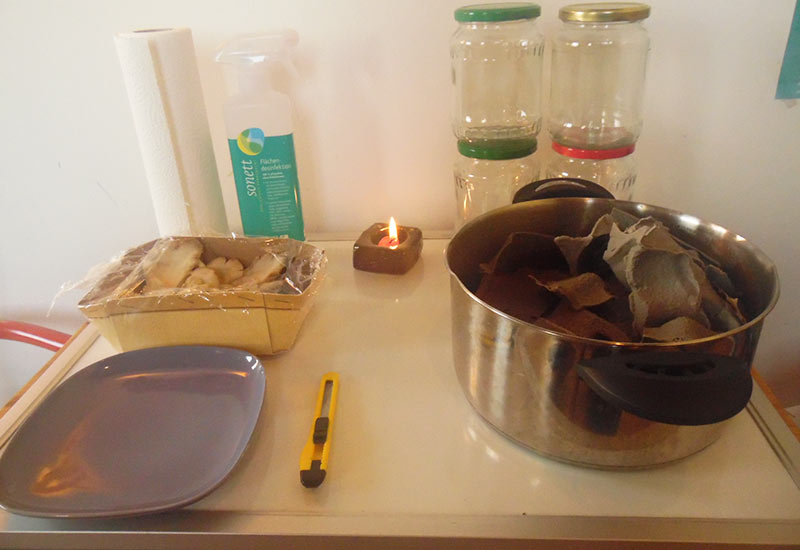
With simple household tools, herb mushrooms can be grown at home. All it takes are a few purchased herb mushrooms from the supermarket and a few simple utensils:
- Disinfectant (or spirit)
- sharp kitchen knife
- Cooking pot with steamer insert
- Cucumber jars
- Cigarette filter
- Cordless screwdriver with 6mm metal drill bit
- Kitchen roll
- Cardboard (egg carton or corrugated cardboard)
- Candle
- Straw pellets (or sawdust from deciduous trees)
- Spray bottle (e.g. deodorant sprayer)
- Plastic bags
- Plate
Clone herb mushrooms
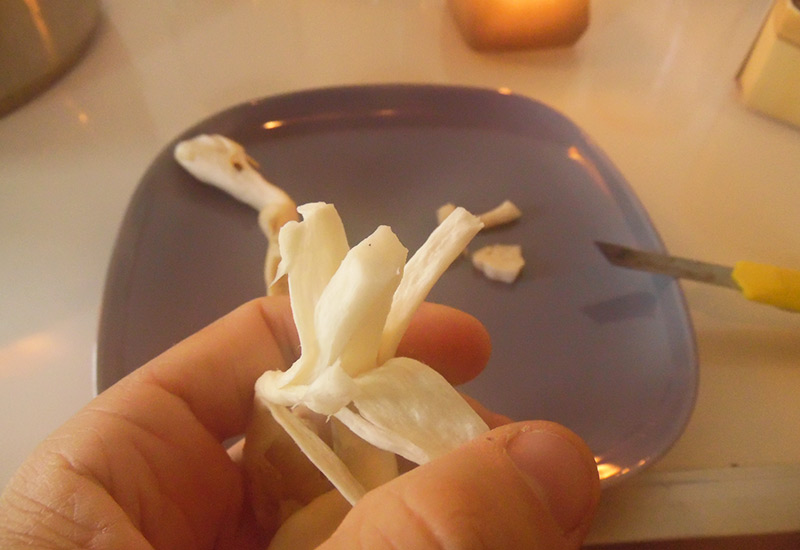
When cloning mushrooms you really have to work clean. After all, only the herb mushroom should be grown on the substrate. Mold growth on the substrate must be avoided at all costs. Therefore, you must disinfect hands and tools before each step.
The following things you must prepare before cloning:
- Cut cardboard into 5x5cm pieces and sterilize in a saucepan with steamer insert for approx. 20 minutes in hot steam
- Drill 2-3 holes in the cucumber jar lids
- Disinfect plates, knives, pickle jars and lids with disinfectant and kitchen paper
Cut out mushroom flesh
The mushroom meat to be cloned must be taken from the inside of the herb mushroom. On the surface of the purchased edible mushrooms other germs have already settled that do not belong in the cucumber jar. To do this, simply remove the skin all around like the skin of a banana and cut the core into small pieces. Sterilize the knife every now and then over a candle flame so that no germs from the mushroom surface get through the knife to the clean mushroom flesh in the core.
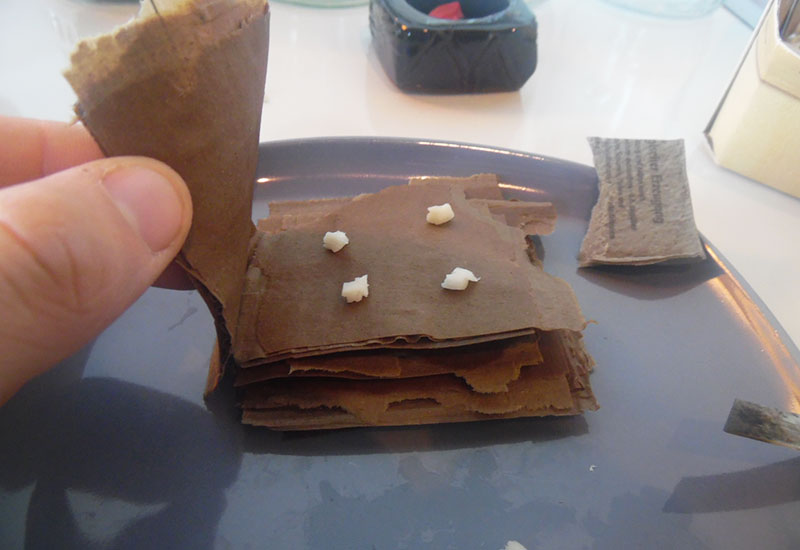
Then simply place the pieces on the cooled and wrung-out cardboard pieces and cover again with a new cardboard piece. Thus, piece by piece forms a Mushroom cardboard sandwichuntil the pickle jar is more than half full.
Then close the pickle jar and insert cigarette filters into the holes in the lid. Now we will see how good the preparation was.
Grow mushroom on cardboard
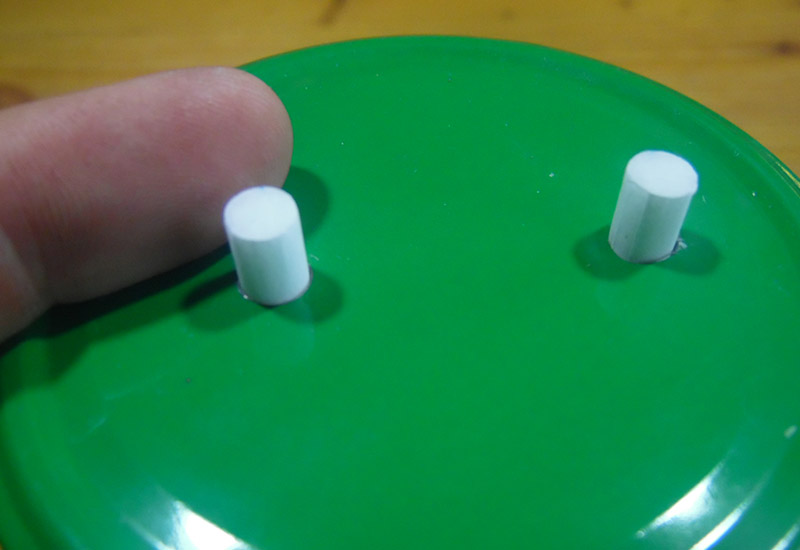
In the following days, the mycelium from the herb mushroom grows from the mushroom pieces into the cardboard pieces. It forms a snow-white, furry coating. For growth, the jars must be dark and require a warm location. The ideal temperature is between 20 and 25 ° C.
When the entire mushroom cardboard sandwich is surrounded by this coating, the next step can take place.
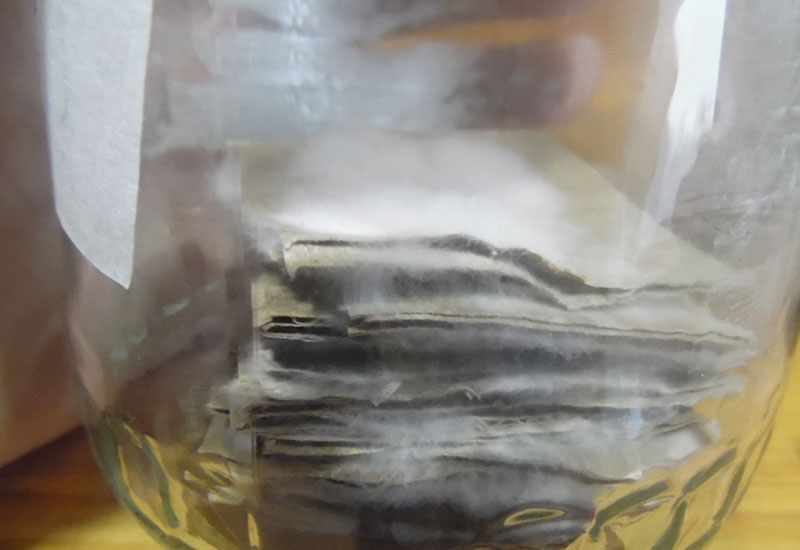
Fill cucumber jars with additional substrate
In addition to cardboard, herb oyster mushroom likes to grow on sawdust from deciduous trees. Ideal is Sawdust, hardwood pellets or smoking chips. But it also works with straw pellets as bedding for hamsters or rabbits from the pet store. However, the mushroom harvest on straw will not be quite as large. But there are straw pellets in almost every hardware store in large bags to buy.
The pellets must be soaked with hot water beforehand. As Mixing ratio come to 1kg straw pellets 1.5l water. Fill the jars with the cooled straw pellets to just below the lid. The mycelium now needs a few days again to grow through the new substrate from cardboard.
The first herb mushrooms grow from the mycelium
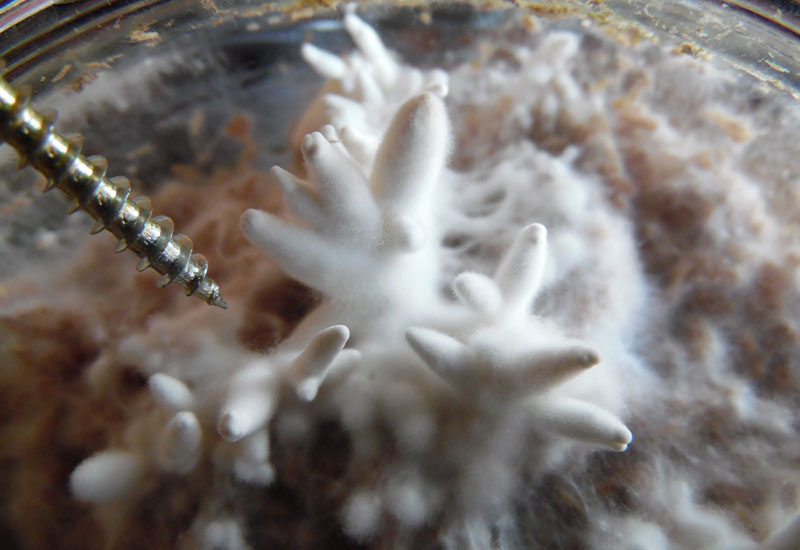
When the substrate is completely grown through, the next phase begins. Now the first beginnings of the actual herb mushrooms appear.
The Primordia grow in the direction of the air holes because they now need more oxygen. They are also looking for the light. The cucumber jars now need a brighter location without direct sunlight. The actual herb mushrooms now like it a little cooler and more humid. Ideal are between 14 and 18°C and a humidity of 90 percent.
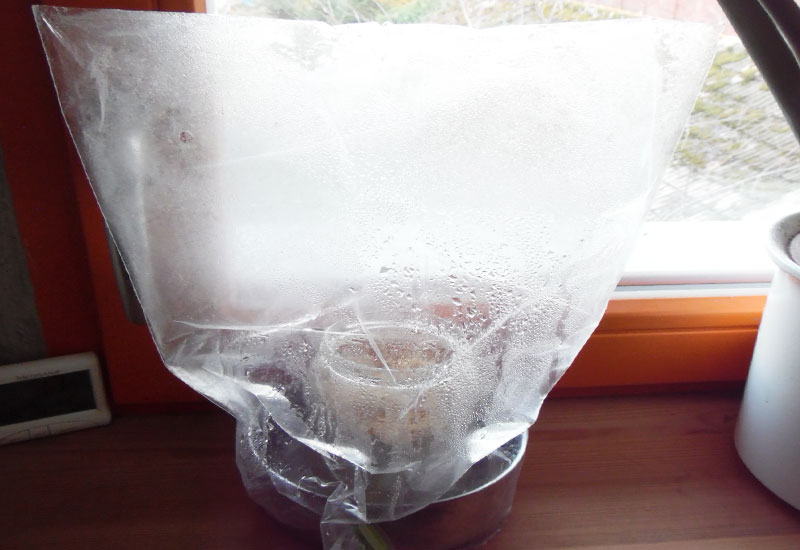
I removed the lids of the cucumber jars and put a bag with air holes over the jars. Twice a day I aired the jars and sprayed the inside of the bag with water using the spray bottle.
The first harvest of their own herb mushrooms
The herb mushrooms are ripe for harvesting When the edge begins to bulge upwards. All the carpenter mushrooms from a common batch must be harvested at the same time. Because mushrooms with injured stems do not grow further, so mycelium overgrow them.
Simply the mushrooms from one batch Turn out of the substrate block by hand and let the others continue to grow. The substrate in the cucumber jar can produce several harvests. In between, however, the mycelium takes a break for a few days until the next mushrooms mature.
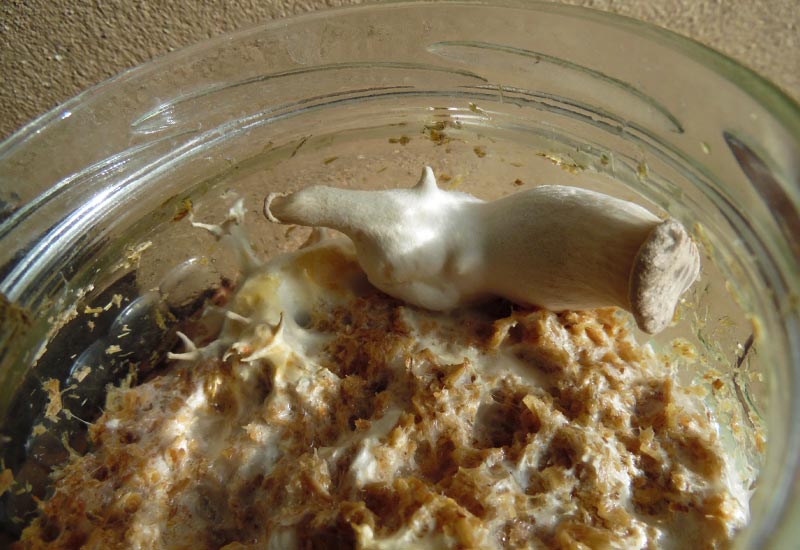
Harvesting depends on the quality of the substrate and the quantity. The Capacity of a cucumber jar has been enough for me about ten herb mushrooms. This amount has spread over about three harvest waves. However, larger amounts of substrate can also be grown through by the mycelium in bags. Accordingly, the harvest is larger.
When no more herb mushrooms form, the substrate is used up. You can then simply dispose in organic waste or throw them on the compost heap. This method can also grow oyster mushrooms or lime mushrooms.
Grow herb mushrooms yourself - Mushroom growing as a hobby
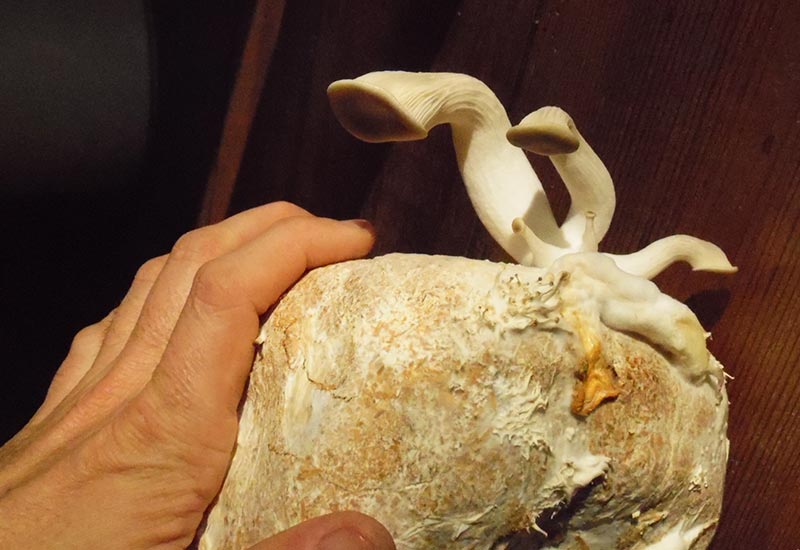
Herb mushrooms are one of the tastiest edible mushrooms, so easy to grow yourself. Oyster mushrooms are even more undemanding in cultivation. They grow faster and are more resistant to mold. But mold in the substrate block can not always be avoided. For this reason, I always grow several substrate mixtures. A few failures due to mold then do not matter so much.
If you find pleasure in this hobby, I recommend growing shiitake on coffee grounds. Coffee grounds as a substrate requires higher standards of cleanliness. It is a very nutrient rich substrate - both for tasty edible mushrooms and molds. Last but not least, there are also countless, other Coffee grounds applicationsWith these you can reuse the leftovers of your coffee.
I hope that I could help you with this article on the cultivation of herb mushrooms. If you have any questions, feel free to contact me!
Stay sustainable,

PS.: For more inspiration around the own mushroom cultivation look gladly also on my blog TransitionsBlog.com over!

